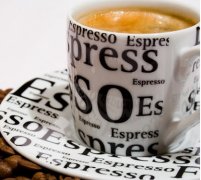Coffee name and Brand on Coffee package
National place name: indicates the area where coffee is produced. For example, "Ethiopia. Harald" indicates that the product is produced in Harald, Ethiopia. It should be noted here that the name of the country is the same, but when the region and year are different, the quality of coffee is different, and the taste of coffee is not guaranteed to be consistent.
Port of export: indicates the port of export of coffee. Coffee of the same origin and brand is shipped at the same export port. For example, "Brazil. Santos" indicates that the goods are shipped from the port of Santos. But "Moga" is an exception, because more than one port is named after "Moga". For example, "Moga." Magdali "," Harald Moga ".
Original name: coffee that is limited to Arab exports and is easy to confuse the original name with the national name. When exporting Arabian and Robusta coffee, the name of the original species should be indicated under the name of the country. For example, "Cameroon. Arabia", "Uganda. Robusta" and so on.
Mountain names: famous brands such as Blue Mountain (Jamaica), Mount Jaya (Indonesia), Mount Kouvell (Costa Rica), Mount Culistar (Cuba), Kilimanjaro (Tanzania), Mount Hagen (Papua New Guinea).
Grade。 Brand number:
Countries are based on self-established criteria as follows:
A) washing / non-washing
B) flat beans / round beans
C) the size of the screened beans is not closely related to the quality, but mainly depends on whether the size of the raw beans is neat and consistent.
D) according to the altitude of the place of origin, the quality of coffee beans produced in areas with high altitude is better than that at lower altitude. coupled with the cost of transportation, the price is higher.
E) the quality standard converts the outstanding points according to the type and quantity of defective beans mixed in a certain amount of samples, so as to reflect the quality of coffee beans. Brazil, Ethiopia, Cuba and other countries have established benchmarks for outstanding points. Of course, the smaller the points owed, the better the quality of the coffee.
F) tasting has its own taste evaluation criteria in Brazil, Haiti, Kenya, Congo and other places, which can only be exported after passing the standard.
The name of the operating exporter indicates the name of the ship transporting coffee or the operating exporter.
Important Notice :
前街咖啡 FrontStreet Coffee has moved to new addredd:
FrontStreet Coffee Address: 315,Donghua East Road,GuangZhou
Tel:020 38364473
- Prev

Teach you to judge a good Espresso
People like to drink coffee because it releases flavor and aroma when it is brewed. The sources of flavor in coffee are mostly water-soluble, such as caffeine, protein, sugar and so on, while the sources of aroma are mostly insoluble, such as coffee oil. The volatile aroma of coffee oil is found in roasted coffee cells. Some of these oils are insoluble in water and are only used on Espresso machines.
- Next

A fine coffee with a supple taste.
The cultivation of Brazilian coffee began more than 280 years ago in 1727. Legend has it that the handsome army officer Pacita was sent to French Gaiana to mediate the territorial dispute between France and the Netherlands. The wife of French Gaiana actually fell in love with him and gave him a bag of bourbon coffee seeds. Right after Parcia returned to Brazil, Para changed his career as a coffee farmer and began to grow coffee.
Related
- Beginners will see the "Coffee pull flower" guide!
- What is the difference between ice blog purified milk and ordinary milk coffee?
- Why is the Philippines the largest producer of crops in Liberia?
- For coffee extraction, should the fine powder be retained?
- How does extracted espresso fill pressed powder? How much strength does it take to press the powder?
- How to make jasmine cold extract coffee? Is the jasmine + latte good?
- Will this little toy really make the coffee taste better? How does Lily Drip affect coffee extraction?
- Will the action of slapping the filter cup also affect coffee extraction?
- What's the difference between powder-to-water ratio and powder-to-liquid ratio?
- What is the Ethiopian local species? What does it have to do with Heirloom native species?

